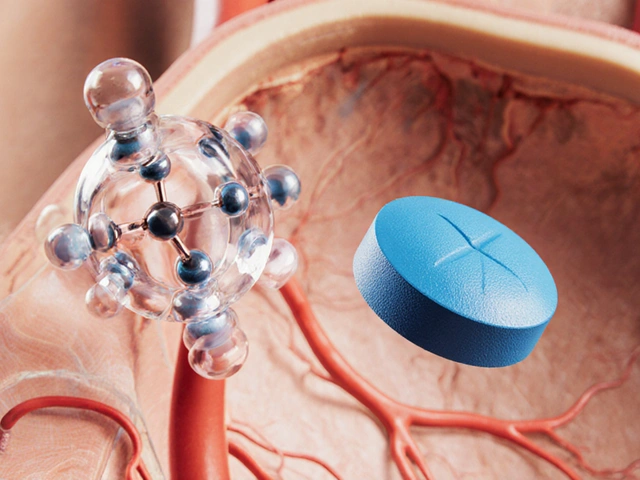Clomid Alternatives – What Works and Why
If you’ve heard about Clomid (clomiphene citrate) but wonder if there’s another option, you’re not alone. Many people look for drugs that are easier on the body, cost less, or fit better with their health goals. Below you’ll find the most common prescription alternatives and a few natural ways to boost ovulation.
Prescription Choices Beyond Clomid
Letrozole started as a breast‑cancer medicine, but doctors now use it to stimulate ovulation. It blocks estrogen, which tricks the brain into releasing more follicle‑stimulating hormone (FSH). Women often report fewer side‑effects like hot flashes, and some studies show higher pregnancy rates in certain cases. Talk to your fertility specialist about dosage – a typical start is 2.5 mg every other day for five days.
Tamoxifen works a bit like Clomid by blocking estrogen receptors, but it does so in different body parts. The result is a boost in FSH and luteinizing hormone (LH). Tamoxifen can be a good choice if you’ve had a poor response to Clomid or if you’re dealing with thin uterine lining. Usual doses range from 20‑40 mg per day for five days.
Anastrozole (Arimidex) is another aromatase inhibitor that lowers estrogen levels, leading to a rise in FSH. Some clinics use it for women who have high estrogen early in the cycle. The drug is inexpensive and often taken at 1 mg daily for five days. Side‑effects are generally mild, but you should monitor bone health if you use it long term.
Gonadotropins (FSH or hMG injections) are the most direct way to stimulate the ovaries. They bypass the brain completely, giving you precise control over dose and timing. The downside is cost and the need for daily injections. If you’ve tried oral pills without success, gonadotropins can be the next step under close medical supervision.
Natural and Over‑The‑Counter Options
While prescription drugs do most of the heavy lifting, some over‑the‑counter supplements can support the process. Vitamin D is linked to better ovulation; aim for 2,000‑4,000 IU daily if you’re low.
Coenzyme Q10 helps improve egg quality. A typical dose is 200‑300 mg per day, taken with food.
Myo‑Inositol is a B‑vitamin cousin that many women with PCOS use to restore regular cycles. Studies show 2 g twice daily can improve ovulation rates.
Herbal options like Vitex (chaste tree) and cinnamon are popular for balancing hormones, but the evidence is mixed. If you try them, keep doses low and watch for any stomach upset.
Whatever route you pick, the key is communication with your doctor. Share any supplements you’re using, ask about possible drug interactions, and get clear instructions on timing. Most clinics will run blood tests to check hormone levels before and during treatment, which helps fine‑tune the plan.
Bottom line: you have several paths beyond Clomid. Letrozole, tamoxifen, anastrozole, and gonadotropins cover the prescription side, while vitamin D, CoQ10, myo‑inositol, and a few herbs can add support. Talk to a fertility professional, weigh cost and side‑effects, and choose the option that feels right for your body and budget.

8 Alternatives to Clomid: What Works (and What to Watch Out For)
- By : Archer Hamilton
- Date : Apr 17 2025
Looking for something other than Clomid? This guide breaks down eight alternatives, showing you the pros, cons, and how they stack up. Whether you’re hoping for a natural route or want to explore other medications, you’ll get a straightforward look at what’s out there and what to expect. Save time, avoid surprises, and get the details you actually need before making a choice. Easy comparisons, honest talk, and zero hype. Perfect for anyone curious about their fertility options.





